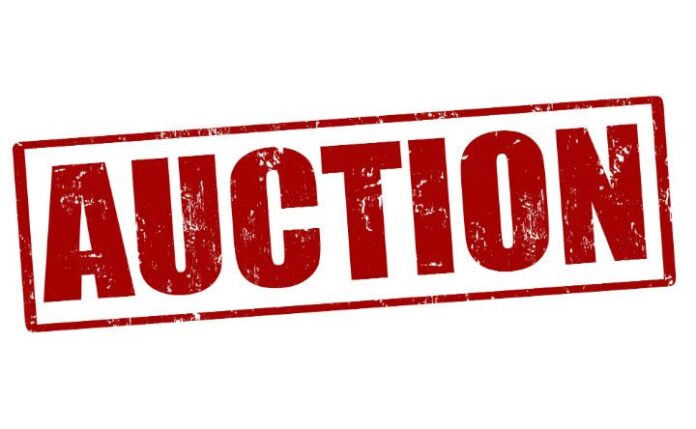Auction 97 pace could see end come soon
Following a two-week break for the holidays, the Federal Communications Commission’s Auction 97 proceedings picked up this morning on what many expect to be the final few rounds of bidding. The FCC spectrum auction has so far generated more than $44.5 billion in total potential winning bids.
The auction eased into the break with only a modest amount of activity, including fewer than 20 new bids through the last two rounds. This morning’s opening round continued that pace with just 12 new bids placed in round 140, generating just over $1.7 million in new potential winning bids.
Activity remained concentrated in mostly second- and third-tier markets, thus adding only small amounts to the auction’s total record haul. The “priciest” license to receive a new bid this morning was the H-Block license centered on Davenport, Iowa, which now sits at just under $9.4 million. One license remains without a potential winning bid: the G-Block license centered on San Miguel, Colo., which has a minimum asking price of $1 million.
The FCC is currently conducting eight rounds of bidding per day, each lasting 20 minutes, But, that pace is scheduled to increase as the FCC announced this morning plans to move that to 10, 15-minute rounds beginning on Jan. 6. That pace could quicken further as past auctions have gone to as many as 16 rounds per day as they neared completion.
The auction’s biggest sticker remains affixed to the J-Block license centered on New York City, with one lucky bidder having committed more than $2.7 billion for that license. The J-Block license centered on Los Angeles is No. 2 with a nearly $2.1 billion bid, followed by the I-Block license centered on New York City at $1.3 billion. Most of the auction’s most expensive licenses have not received new bids for more than 40 rounds.
Stephen Wilkus, CTO at Spectrum Financial Partners, put together a video presentation on bidding activity.
The licenses up for bid are spread across the 1.7/2.1 GHz spectrum bands known as AWS-3. The licenses include three 5×5 megahertz licenses (G-, H- and I-Blocks) and a single 10×10 megahertz license (J-Block). The G-Block licenses are carved into commercial market area-sized licenses, which total 734 licenses covering the country. The remaining blocks are economic area-sized that will total 176 licenses covering the country. The 15 megahertz of unpaired spectrum is split into two licenses, one with 5 megahertz of total spectrum parsed out on an EA basis, and the other with 10 megahertz of spectrum also in an EA configuration.
Auction 97 can be seen as nothing but a stellar success for the federal government, which had initially put a $10.5 billon reserve price on all 1,614 licenses up for bid. Initial estimates suggested the auction could potentially rival the $19.6 billion haul recorded by the Auction 73 in 2008, which was easily surpassed within the first week of bidding.
The FCC’s Auction 73, which included a total of 52 megahertz of spectrum garnering bids surpassing the reserve price, was the previous high mark, generating $19.6 billion in total winning bids in 2008. That spectrum was seen at the time as “beach front” due to the superior propagation characteristics of the 700 MHz band and became the foundation for the LTE networks since rolled out by Verizon Wireless and AT&T Mobility. That spectrum also set the U.S. on its way to a leadership position in the rollout of LTE services as Verizon Wireless rapidly launched LTE services using that band, thus prompting rivals to quickly follow suit.
Auction 66, which included 90 megahertz of paired spectrum in the 1.7/2.1 GHz band, generated nearly $13.9 billion in total winning bids when it concluded in 2006. T-Mobile US came out the big spender in those proceedings, bidding nearly $4.2 billion on licenses that have become the backbone of its LTE network.
The FCC earlier this year generated a disappointing $1.5 billion in total bids during the H-Block auction, with Dish Network walking away with all of the 10-megahertz licenses in the 1.9 GHz band at the proceeding’s minimum reserve price.
Auction 97 is set to conclude when there are no bids in a single round. Past auctions have gone at least 161 rounds (Auction 66), while Auction 73 went to 261 rounds. License winners won’t be known until after the auction concludes. Participants in Auction 97 include Verizon Wireless, AT&T, T-Mobile US and Dish Network.
Bored? Why not follow me on Twitter?
Photo copyright: / 123RF Stock Photo

